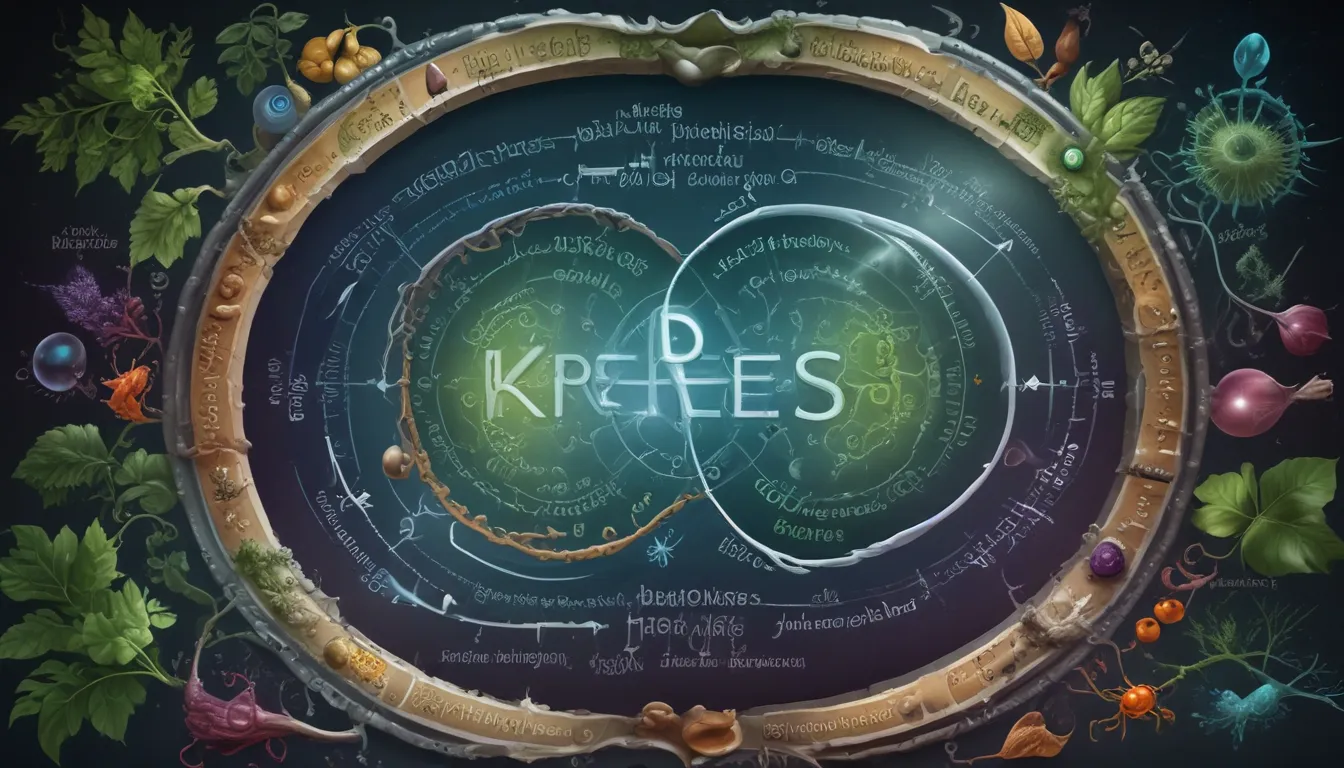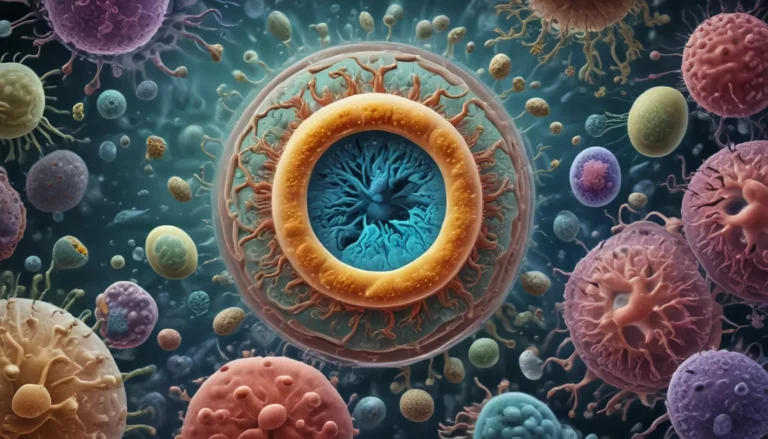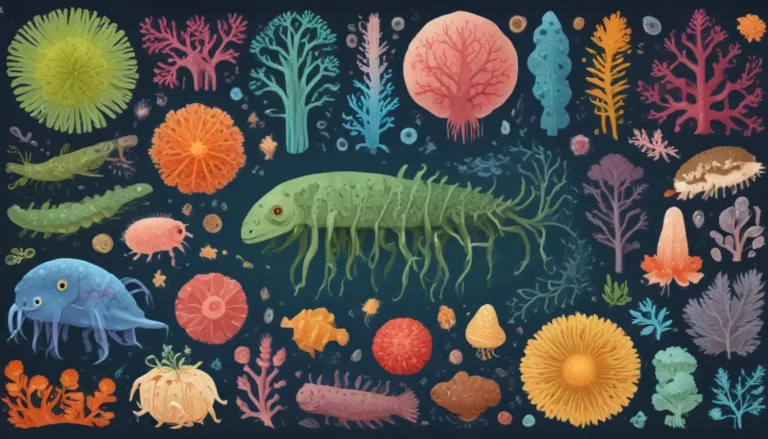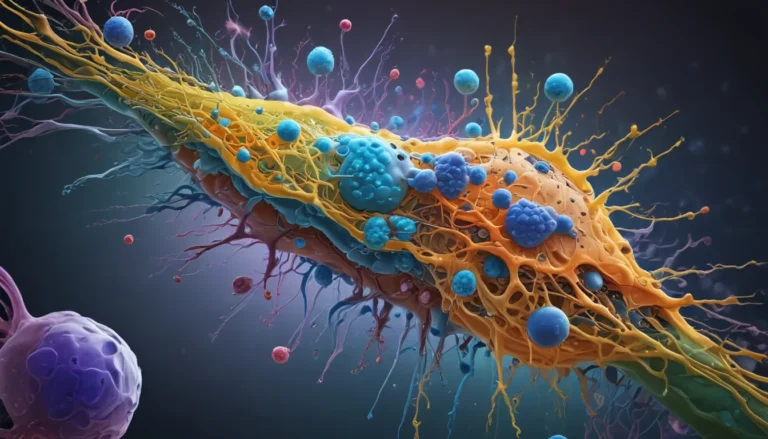A Note About Images: The images used in our articles are for illustration purposes only and may not exactly match the content. They are meant to engage readers, but the text should be relied upon for accurate information.
Do you want to deepen your understanding of cellular respiration and discover the remarkable properties of Krebs Cycle intermediates? The Krebs Cycle, also known as the Citric Acid Cycle or the Tricarboxylic Acid Cycle, is a fundamental process in cellular respiration. It plays a crucial role in converting nutrients and generating energy in the form of ATP. In this article, we will explore 17 extraordinary facts about Krebs Cycle intermediates that will unravel the intricacies of this essential metabolic pathway.
Unveiling the Secrets of Krebs Cycle Intermediates
The Krebs cycle involves 17 fascinating steps, producing energy-rich molecules and linking to other metabolic pathways. Sir Hans Adolf Krebs discovered the cycle in 1937, and it takes place in the mitochondria, the powerhouse of eukaryotic cells.
The Intriguing Intermediates of the Krebs Cycle:
-
Citric Acid: The first intermediate in the cycle, citric acid, also known as citrate, serves as the primary substrate.
-
Isocitric Acid: Isocitric acid, an important intermediate, moves the cycle forward, facilitating further energy production.
-
Alpha-Ketoglutaric Acid: This intermediate links the Krebs cycle to amino acid metabolism and generates NADH in the process.
-
Succinyl-CoA: A key player in the cycle, succinyl-CoA undergoes substrate-level phosphorylation, producing GTP and succinic acid.
-
Fumaric Acid: Converted from succinic acid, fumaric acid releases another molecule of FADH2, enriching the cycle with energy molecules.
-
Malic Acid: Malic acid, a pivotal intermediate, is transformed back to oxaloacetic acid in the final step of the cycle.
Understanding the Significance of Krebs Cycle Intermediates:
- Energy Production: The cycle generates energy-rich molecules like ATP, NADH, and FADH2 for further utilization in the electron transport chain.
- Carbon Dioxide Production: Carbon dioxide is produced as a waste product during the cycle, which is exhaled by organisms.
- Interconnected Pathways: Krebs cycle intermediates serve as precursors for synthesizing amino acids, nucleotides, and lipids.
- Regulation: The cycle is tightly regulated by factors like allosteric regulation, feedback inhibition, and hormonal control.
- Metabolic Disorders: Dysregulation of the Krebs cycle can lead to metabolic disorders like mitochondrial diseases and metabolic syndromes.
By unraveling the intricacies of the Krebs Cycle intermediates, we gain a deeper understanding of cellular metabolism and its vital role in sustaining life.
Unveiling the Mysteries
About the Discoverer and the Location
The Man Behind the Cycle: Sir Hans Adolf Krebs
- Sir Hans Adolf Krebs discovered the Krebs cycle in 1937 and was awarded the Nobel Prize in Physiology or Medicine in 1953 for his groundbreaking work.
The Abode of Energy Production: Mitochondria
- The Krebs cycle takes place in the mitochondria of eukaryotic cells, specifically in the matrix – the innermost compartment of this essential organelle.
Exploring Krebs Cycle Intermediates
From Citric Acid to Oxaloacetic Acid
- The cycle begins with citric acid, the primary substrate, and progresses through isocitric acid, alpha-ketoglutaric acid, and other intermediates, culminating in the regeneration of oxaloacetic acid.
Fueling Energy Production
- Each intermediate contributes to energy production by generating ATP, NADH, and FADH2, essential for sustaining cellular functions and processes.
Connecting to Other Pathways
- The intermediates of the Krebs cycle are interconnected with various metabolic pathways, serving as precursors for amino acids, nucleotides, and lipids, supporting cellular homeostasis.
Delving Deeper into Krebs Cycle Knowledge
FAQs
- What is the Krebs Cycle?
-
The Krebs Cycle, or the citric acid cycle, is a series of biochemical reactions that occur within the mitochondria of cells, generating energy for cellular processes.
-
How many intermediates are there in the Krebs Cycle?
-
The Krebs Cycle involves eight intermediates, each serving a specific function in energy production and metabolic regulation.
-
How is the Krebs Cycle regulated?
-
The Krebs Cycle is tightly regulated through feedback mechanisms and enzyme activity control to ensure optimal energy production and metabolic balance.
-
Can the Krebs Cycle operate in the absence of oxygen?
-
No, the Krebs Cycle requires oxygen for efficient energy production and functioning within the mitochondria of cells.
-
What happens to the intermediates produced in the Krebs Cycle?
-
The intermediates produced in the Krebs Cycle can enter into various metabolic pathways, supporting biosynthesis and cellular processes.
-
Are all organisms capable of performing the Krebs Cycle?
-
Most organisms have the enzymes necessary for the Krebs Cycle, ensuring energy production and metabolic regulation in living organisms.
-
Can dysregulation of the Krebs Cycle lead to diseases?
-
Disruptions in the Krebs Cycle can contribute to metabolic disorders and diseases, affecting overall cellular function and health.
-
How does the Krebs Cycle connect with other metabolic pathways?
- The Krebs Cycle is interconnected with multiple metabolic pathways, providing precursors for amino acids, nucleotides, lipids, and other essential biomolecules.
Dive Deeper into Cellular Respiration
Exploring the intricacies of cellular respiration and energy production, the Krebs cycle intermediates play a crucial role in unraveling the mysteries of metabolism. From the versatile role of citrate to the energy-rich molecule succinyl-CoA, each intermediate holds its own significance in the cycle. Delve deeper into the world of cellular respiration and discover more captivating facts about the Krebs cycle and its intermediates.
Was this page helpful?
Our commitment to delivering trustworthy and engaging content ensures that each fact on our site is contributed by real users, bringing diverse insights and information. Trust in our dedication to quality and authenticity as you explore and learn with us.






